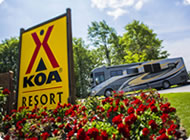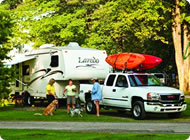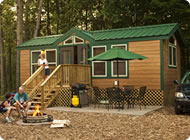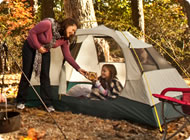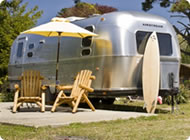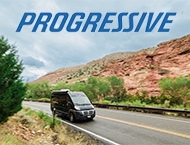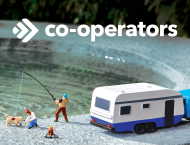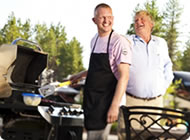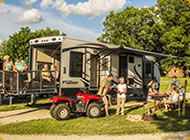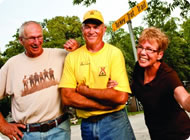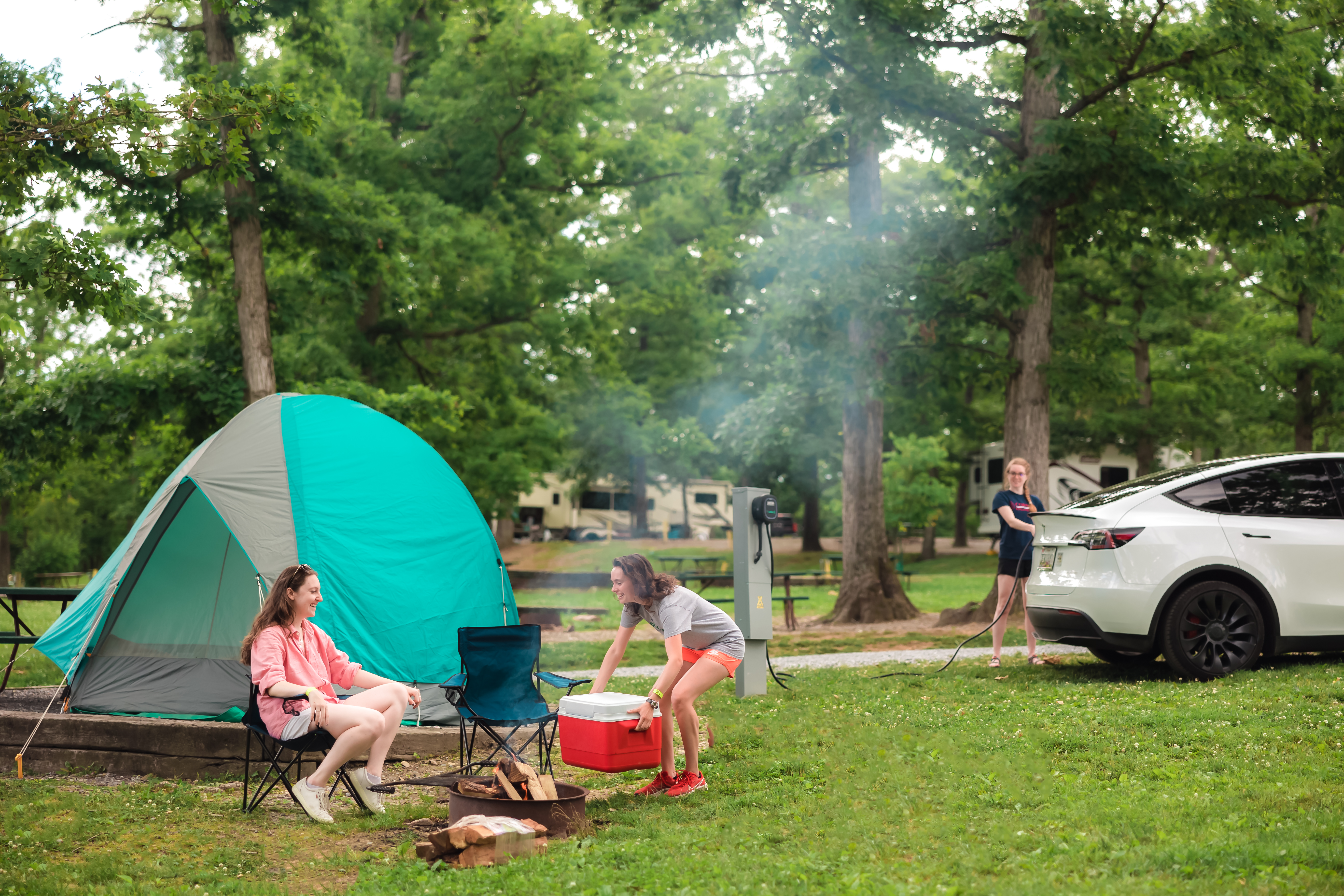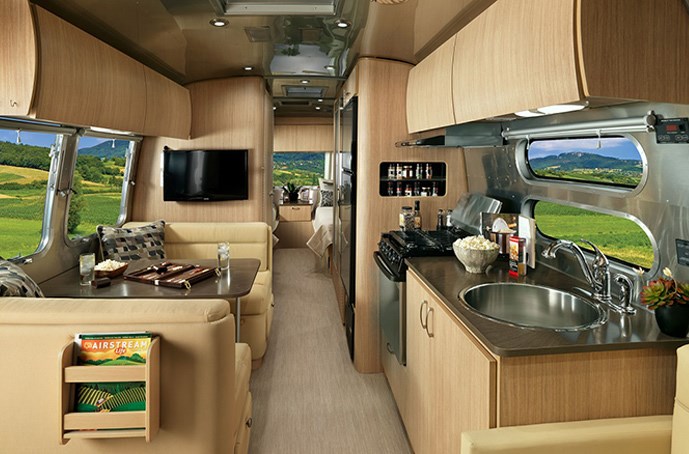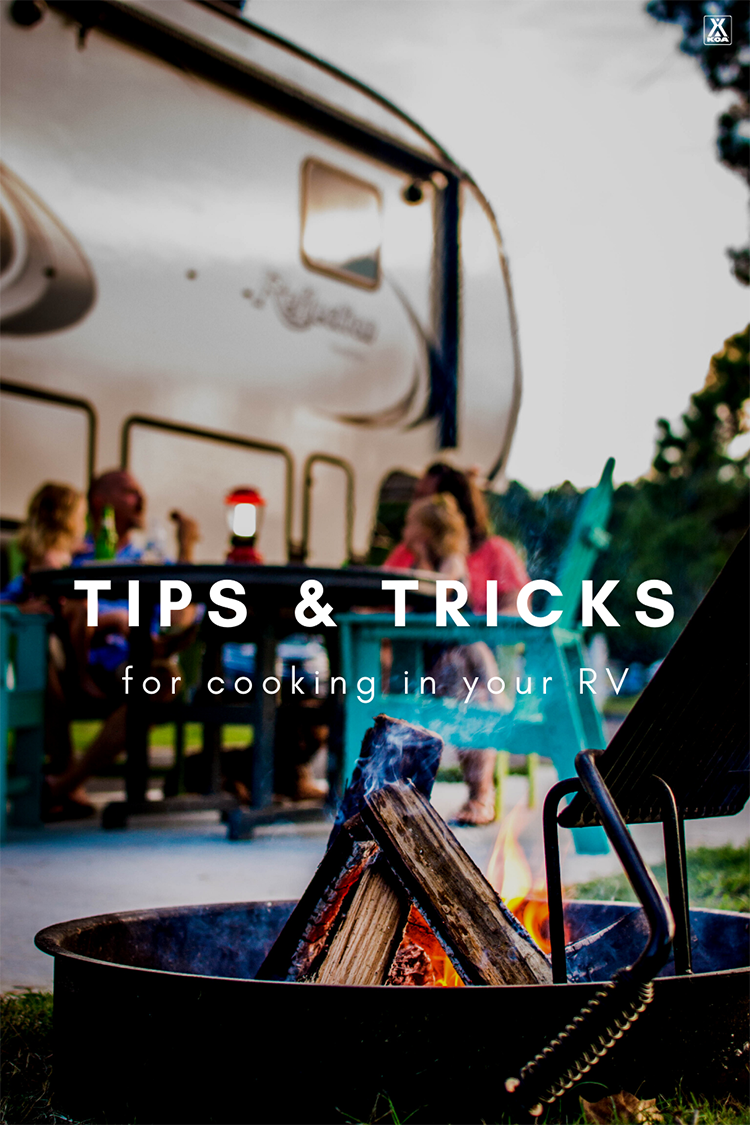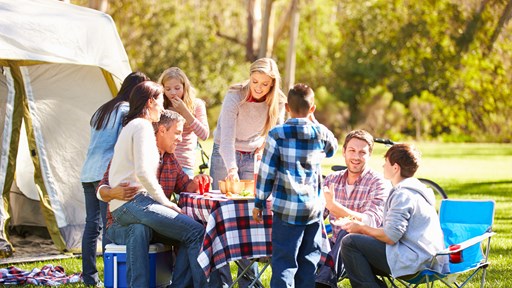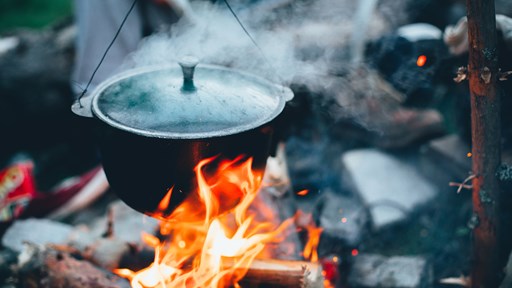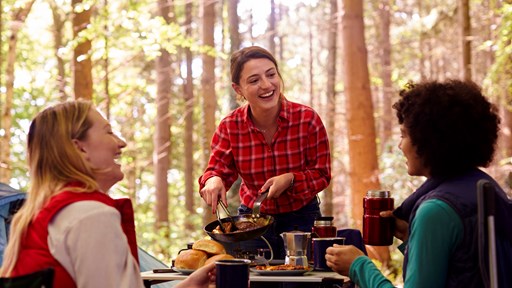When it comes to cooking in an RV kitchen, efficiency is key. Unlike home, you have severely limited counter space and far less storage. While you may not have room to spread out, that doesn’t mean you can’t cook creative and delicious recipes. Sure hotdogs over the campfire are fun, but you can expand your repertoire to a much wider variety of dishes. These tips and tricks for cooking in your RV kitchen will help you create meals that everyone will love.
Gear Up Your RV Kitchen Like a Pro
When you’ve got limited room, you want to be efficient with your RV Kitchen. This means that your accessories need to serve more than one purpose. The more your kitchen accessories can do, the more effective they are at creating efficient meals in a small space. Kitchen essentials include:
A good chef’s knife
This knife can serve multiple purposes if it needs to, cutting everything from tofu to hard squashes. A paring knife is optional, but also helpful.
Nesting pots and pans
The more lightweight the better. Look at camping-specific cook sets, which often have built-in strainers on the lids. The pots and pans should be designed to pack down and have removable elements that help take up less space. You should have one big pot for boiling pasta, a smaller pot for quick-and-easy dishes, and one skillet to fry things up.
Reusable silicone bags
These bad boys are worth their weight in gold. Reusable silicone bags give you a variety of options without filling up your trash can (or the landfill). You can boil or freeze meals in them, wash them out, and then pack snacks for a day out and about. It’s good for the environment, and you won’t have to take up precious cabinet space with disposable plastic bags.
A small cutting board
Opt for something durable that doesn’t flop. You may want to consider one that fits over your sink, which can provide additional counter space as well.
Lightweight utensils, cups, plates, and bowls
The lighter the weight, the less likely things are to bang around your RV while on the move and the less likely to damage your cabinets.
Tongs, spatula, ladle, wooden spoon, and knife sharpener
All you need are the basics you can use for most every meal. If you sharpen your knives before you leave, keep the sharpener at home.
Keep Meals Simple

Jake Przespo
The number one rule of RV meals is to keep things as simple as possible. If your RV can handle the power draw, a crockpot or an Instapot are worthy investments. If not, think about things that can be made or prepped in advance or cooked in just one pot. Often you’ll want something quick-and-easy. But having a simple meal doesn’t mean sacrificing flavor. Recipes like this one for chili are easy to make in a small space.
Single-Pot Chili and Cornbread
Ingredients:
- 1 tablespoon of cooking oil (optional)
- 1 pound of ground beef or turkey
- 1 cup of chopped onion (about half an onion)
- 1 cup of chopped bell pepper (any color works well)
- One small can of jalapeno peppers (adjust the spiciness to your preferred taste)
- Small can of hatch chilis (optional)
- 2 teaspoons of minced garlic
- 1 15-ounce can of diced tomatoes
- 1 15-ounce can of tomato sauce
- 1 15-ounce can of kidney beans
- 1 packet of chili seasoning (or your own personal mix)
- 1 box of cornbread mix with additional ingredients to make the batter
- Salt and pepper to taste
- Shredded cheddar cheese, extra jalapenos and sour cream for garnish
Instructions:
- Whip up the batter for the cornbread. Set aside.
- Heat the oil in a large pot over medium heat. Add the ground meat, jalapenos (one can is pretty spicy, adjust the spice to your needs), the onion, peppers, and garlic. Saute until the meat is just about done. Drain fat (optional, but recommended if you’re using non-lean meat).
Add the remaining cans of ingredients and seasoning. Stir well to combine and season with salt and pepper to taste. Reduce heat to medium Pour the cornbread batter over the chili then reduce heat to medium-low. Cover and cook for 30 minutes or until the cornbread is done.
Look for Easy Substitutes for Your At-Home Favorites
 Pille-Riin Priske
Pille-Riin Priske
A great way to get creative with RV cooking is to keep an eye out for easier alternatives. For example, homemade pasta sauce is great, but cooking for hours in an RV kitchen will result in one hot living space. Use jarred sauce instead. Other options include using instant rice instead of regular rice, powdered potatoes, mac and cheese from a box, and other items that won’t go bad and cook in a jiffy. Some days, especially after a long day of adventure, you might just want to eat these simple meals instead.
One-Pot Loaded Potatoes
I love this dish because it’s simple. It’s also got plenty of carbs, fat, and salt, something your body needs after a long day out hiking, biking, kayaking, or other intense physical activity.
Ingredients
- A box of instant mashed potatoes
- 1 tablespoon of butter
- Shredded cheese (cheddar or blue cheese crumbles work great)
- 1 packet of frozen veggies (I like corn, peas, and carrots)
- Bacon bits
- Sour cream for garnish
- Seasoning salt and pepper to taste
- Sriracha or buffalo sauce (optional, but great if you like a little kick)
Instructions
Cook the potatoes as instructed, keeping extra water on hand while the other ingredients cook through. Add in frozen veggies and stir constantly until heated through—add water as needed (if the potatoes start to look chalky or stick to the pan too much, add water. Fold in cheese and bacon bits. Garnish with sour cream and hot sauce. You can easily pair this with a protein of your choice, such as beans or meat or eat it as a stand-alone dish.
Meal Prep for an RV
If you’re the type who likes to plan ahead, then meal prepping is an RV cooking dream. Make your meals in advance, such as a BBQ marinated chicken, baked pasta casseroles, enchiladas, or stews. Plop the entire meal in a foil pan or a reusable silicone bag, stuff it in your cooler or RV refrigerator and go. Here’s the way to get that slow-cooked pasta sauce that you love from home to pair with your spaghetti—have it already made. This is a no-brainer way to cook efficiently in an RV, and it cuts down on dishes and eliminates the need for counter space.
Camper Sausage with Peppers and Onions
This meal is so stupid easy it hurts! Make it in advance and heat it up at camp. Don’t forget to pack the condiments.
Ingredients:
- 1 tablespoon of cooking oil
- 2 bell peppers (any color)
- 1 onion
- 3 sausages of your choice
- Salt and pepper to taste
Instructions:
Before you hit the road, slice up the bell peppers. Fire up the grill to your desired heat (medium works best, but every grill is different). In a skillet, heat oil over medium-high heat. Plop the peppers in the pan and fry until cooked through and slightly charred, season with salt and pepper to taste while cooking. Cook the sausage over the grill until done, turning once.
Once finished, let the sausages rest for a few minutes, then cut into bite-sized slices. Combine the sausage and peppers in one silicone baggie and refrigerate. When you’re at camp, heat the stove to medium-low heat and reheat your meal. Serve with any condiments of your choosing.
Stay Organized
One of the biggest challenges of cooking in an RV is staying organized. Use magnet bars to keep knives and other metal utensils safe and secure. Label your drawers so you are able to find what you need in a jiffy—and always put things back where they belong, as soon as you’re finished with it. That’s the other rule of RV cooking: With so little space, you can’t leave things lying around if you’re finished with them. Learn to put things away as you go.
Part of the fun of camping is having a campfire—so go ahead and use it for cooking. Do your prep work inside but take advantage of the fire outside, either with a grill or in a Dutch oven.
Cooking in an RV is a wonderful experience. Sure, it takes a bit more planning, but the joy you get from quality meals prepared in beautiful outdoor places is well worth the effort. It just takes a little bit of experience, and soon you’ll be wowing the family with dishes that you’ve never made before at home.
Written by Meg Atteberry for Matcha in partnership with Kampgrounds of America.







